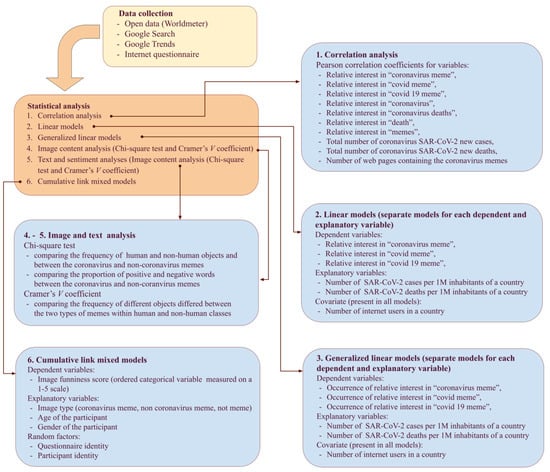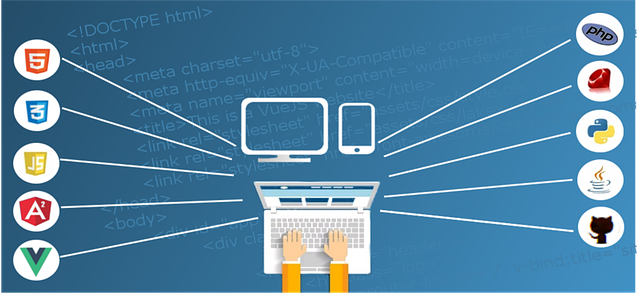Why is CRM so vital to businesses today? What are its limitations and how do they impact its effectiveness? Could these drawbacks potentially impede an organization’s growth and customer relationships? Thought-provoking questions like these help us delve deeper into the challenges of implementing and maintaining a CRM (Customer Relationship Management) system. This valuable tool, despite its immense benefits, does come with its set of constraints that need to be addressed.
According to Salesforce, a leading CRM provider, data quality is one of the biggest challenges for businesses using CRM systems. Meanwhile, Forbes highlights a different concern, mentioning that companies often underutilize CRM due to a lack of understanding of its full capabilities. These limitations, if unaddressed, can create significant difficulties and may prevent businesses from fully leveraging the benefits of CRM systems. To resolve these issues, it is crucial that companies invest in quality data collection and a thorough understanding of their CRM systems.
In this article you will learn more about the common pain points, limitations, and impediments when leveraging a CRM solution within organizations. We will explore these constraints to give you, the reader, a comprehensive understanding of this integral system’s effectiveness and efficiency in dealing with identified barriers.
Furthermore, the article will delve into potential solutions and strategies to mitigate the limitations of a CRM system. With insights from industry experts, practical case studies, and innovative strategies, this discussion aims to equip businesses with the necessary knowledge to maximize their CRM efficiency and effectiveness.

Understanding Definitions and Limitations of CRM
Customer Relationship Management or CRM refers to the strategies, technologies, and practices that companies use to manage and analyze customer interactions and data throughout the customer lifecycle. Despite its many benefits, CRM systems also have limitations.
Firstly, CRM systems require significant time and financial investment, particularly for training staff to use the system effectively.
Secondly, not all customer interactions can be adequately captured and quantified in a CRM, leaving a potential gap in customer understanding.
Finally, the success of a CRM system relies heavily on user adoption. If employees resist using the system, its potential benefits may not be fully realized.
Unveiling the Unseen: Dark Side of CRM Limitations
Hidden Pitfalls of Customer Relationship Management (CRM)
Despite their advertised manifold advantages, CRM systems are not a panacea for all business woes. One major limitation of CRM systems is their often restrictive, one-size-fits-all nature. While beneficial for businesses starting from scratch, existing corporations may struggle to reconfigure their processes to fit within the confines of a new CRM infrastructure. This leads to potential misalignment between business processes and CRM capabilities, creating inefficiencies rather than solving them.
Business enterprise applications
Microsoft 365 Apps for Enterprise
Enterprise Business apps generator
Additionally, the heavy reliance on accurate data can be another potential pitfall. A CRM system is heavily dependent on the accuracy of data entry. Incorrect or incomplete data can lead to flawed customer profiling, influencing bad decisions, and eventually, unfavorable outcomes. This complex data management task is a burden that requires dedicated resources and constant supervision.
The Unforeseen Financial Implications
The financial implications of CRM systems are too oft overlooked. They can present themselves in several forms:
- High Initiation Costs: The implementation of a CRM system can be quite a financial burden, particularly for small businesses. This includes the cost of software, hardware, and personnel training.
- Ongoing Expenses: Besides the upfront costs, CRM systems also constitute recurring expenditure. This includes regular updates, maintenance, data storage, and expansion costs.
- Unanticipated Costs: Robust CRM systems can result in hidden costs, such as those associated with system customization, added features, and additional training when system upgrades occur.
To add to the financial stress, the return on investment (ROI) from CRM systems can take time to materialize. This can strain a company’s financial resources, especially if they are not well-prepared for such a drawn-out return cycle.
Ensuring the CRM system fits the unique requirements of the business and making provision for the financial implications signals the need for informed decision-making in CRM adoption. Clearly, even within user-friendly interfaces and highly automated systems, the dark side of CRM limitations lurk, potentially affecting the business’s performance negatively. Therefore, businesses should proceed with caution in CRM adoption, understanding that a tool, however powerful, is only as effective as its use allows.
Decoding CRM: The Inherent Limitations Creating Roadblocks in Business Success
Is your CRM System Truly Streamlining your Business Processes?
As thought-provoking as it might initially sound, many businesses often find that the Customer Relationship Management (CRM) software they employ isn’t operating at the level of efficiency it should. This inefficiency is not basically a fault of the software but stems from the underlying limitations that pose hurdles in leveraging the potential of CRM fully. One significant limitation that troubles businesses is the lack of proper integration. If a CRM system cannot seamlessly integrate with your other business tools such as enterprise resource planning software or human resources tools, the disjointedness could lead to operational inefficiencies or data inaccuracies that could hamper customer relationship management and, ultimately, business success. Another roadblock is the insufficiency of useful analytics. After all, a CRM system should not only store and organize customer data but also provide transformative insights to make that data actionable.
The Predicament of CRM Adaptability and User Experience
While the first hurdle pertains to the operations aspect of CRM, the second major problem lies in its adaptability and user experience. An intuitive, user-friendly interface is crucial to any software application’s success, and CRM is no exception to this rule. If a CRM system is too complex and daunting to use, it could face resistance from the staff, who may end up underusing or misusing it. Consequently, user-adoption becomes a serious issue that can obstruct the benefits of CRM. Furthermore, in today’s rapidly evolving business climate, the CRM tool must be capable of adapting to changing needs. It should be flexible to customize and scale as per your business growth or changes in the industry. If a CRM system lacks this flexibility, businesses could face problems down the line with a tool that can’t keep pace with their evolution.
Best Practices to Overcome CRM Limitations
A silver lining, however, exists in the form of best practices businesses can adopt to work around CRM limitations, ensuring they reap maximum benefits. Firstly, during the CRM selection process, businesses should ensure that the tool can integrate well with the existing infrastructure. Proper due diligence is required to ascertain integrations with other key tools your business is using; you might want to consider a CRM with good API capabilities for this purpose. Secondly, before implementing a CRM tool, businesses should ensure that it is user-friendly and intuitive. They may consider conducting employee training sessions to encourage a smooth transition and higher adoption rates. Lastly, they should opt for a CRM that offers robust analytics and customization options. Companies can employ data scientists or analysts who can make the most of the analytical capabilities that modern CRMs offer, helping transform raw data into actionable insights that drive valuable business decisions. These practices can help businesses overcome inherent CRM limitations, empowering them to harness the full potential of CRM.
Navigating the CRM Labyrinth: How its Limitations Can Render Your Efforts Futile
Lack of Utilization and Understanding: The Critical Setback
Does your organization fully understand the intricacies of your implemented CRM? The depth and complexity of CRM systems can often influence teams to only utilize them partially or inefficiently. The key issue here is that CRM holds the potential to manage relationships with customers in a comprehensive way, but its usage limits are wholly dependent on the team’s understanding of its functionalities. Hence, businesses could lose significant opportunities for growth when the full capacities of the CRM, such as campaign management, lead generation, and data analysis, are not exploited.
Incomplete Data and Integration Issues: Hurdles in the Race
An equally significant limitation of some CRM platforms is that they tend not to synchronize completely with other enterprise systems. This can result in incomplete data reporting, limiting the effectiveness and accuracy of insights derived from the CRM. Data integration across the company is vital for holistic business management; however, if a CRM cannot provide integrated data, its effectiveness is compromised. Furthermore, synchronization issues may compel employees to manually enter data, which can lead to inaccuracies and inefficiencies- detrimental to the company’s agility in the fast-paced business environment.
Overcoming Limitations: Charting the Course Through the Labyrinth
Despite these challenges, Companies can overcome these limitations with some best practices. Regular training and educational sessions can heighten the team’s proficiency with the CRM platform, thereby leading to more efficient utilization. To resolve incomplete data reporting and issues associated with integration, companies should opt for CRM platforms that support seamless integration with other enterprise systems. For instance, Salesforce, Microsoft Dynamics, and Zoho, are known for their adeptness at integrating with diverse systems, thus ensuring the comprehensive availability of data. Therefore, while CRM systems might come with inherent limitations, correct implementation and usage, accompanied by careful choice of platform, can steer the company towards successful customer relationship management.
Conclusion
Are all customer relationship management systems infallible? It’s clear that while CRMs have a wide range of benefits, such as fostering a better customer relationship and streamlining marketing strategies, they come with significant impediments. In essence, choosing the right CRM is only a small fraction of the challenge, and organizations need to understand that a CRM system is a tool to augment their goals, not a magic wand to instantly fix all their problems. High costs accrue not only from purchasing and implementing the software, but also from training employees to use it effectively. Additionally, the risk of data breach comes alongside the use of CRM tools, creating potential reliability and trust issues that could ruin customer relationships if not appropriately handled.
We value your readership here, and we want you to join us as we delve into the nitty-gritty of all things in the tech world, particularly customer relationship management. Explore the world of CRM with us and gain insights on how to mitigate these limitations and turn them into leverage for your business. We promise to bring you more enlightening content that breaks down complex technology concepts into digestible information. Await our upcoming releases and be the first to know, as we won’t just inform you, but equip you with the know-how to use technology to your advantage.
In conclusion, despite these limitations, it is evident that the pros of CRM systems surpass their cons if correctly applied. It’s all about knowing how to circumnavigate these challenges to squeeze maximum utility from a CRM. Nevertheless, it’s important to ensure that the chosen CRM aligns with your business needs and objectives, and that you establish practical measures to secure customer data. The successful use of a CRM lies in its appropriate application and adaptability to constant changes in the business environment. So, keep watching this space to discover more insights on how to get value from your CRM. Some limitations are inescapable, but with the right information, they can be effectively managed. Stay with us, as we continue this enlightening journey on customer relationship management systems.
F.A.Q.
FAQ
Q1: What are some of the challenges of CRM implementation?
A: One key challenge is data quality. Poor or inaccurate data can lead to incorrect targeting and results. Additionally, resistance from employees who are used to a more traditional way of doing things can cause friction during system adoption.
Q2: What could be the potential cost implications of a CRM system?
A: Initial setup can be quite costly, especially for small businesses. Ongoing costs can also quickly accumulate, considering training, maintenance, and potential software upgrades.
Q3: How might CRM limit customer interaction?
A: CRM systems can sometimes depersonalize customer relationships, leading to less personal interaction. Additionally, relying solely on CRM data might neglect the importance of direct feedback and personal experience, which can limit understanding of customer needs.
Q4: Can CRM systems create privacy issues?
A: Yes, CRM systems can potentially create privacy issues if improperly handled. While they gather customer data to help companies provide better service, customers might be perturbed if they feel their personal data is being misused or overstepped.
Q5: Are there drawbacks to relying solely on CRM for customer management?
A: CRM systems should ideally be used as a tool rather than the only method for customer management. They cannot substitute the need for human interaction, and relying solely on the CRM’s interpretation of data can overlook nuanced human insights that might prove critical.


